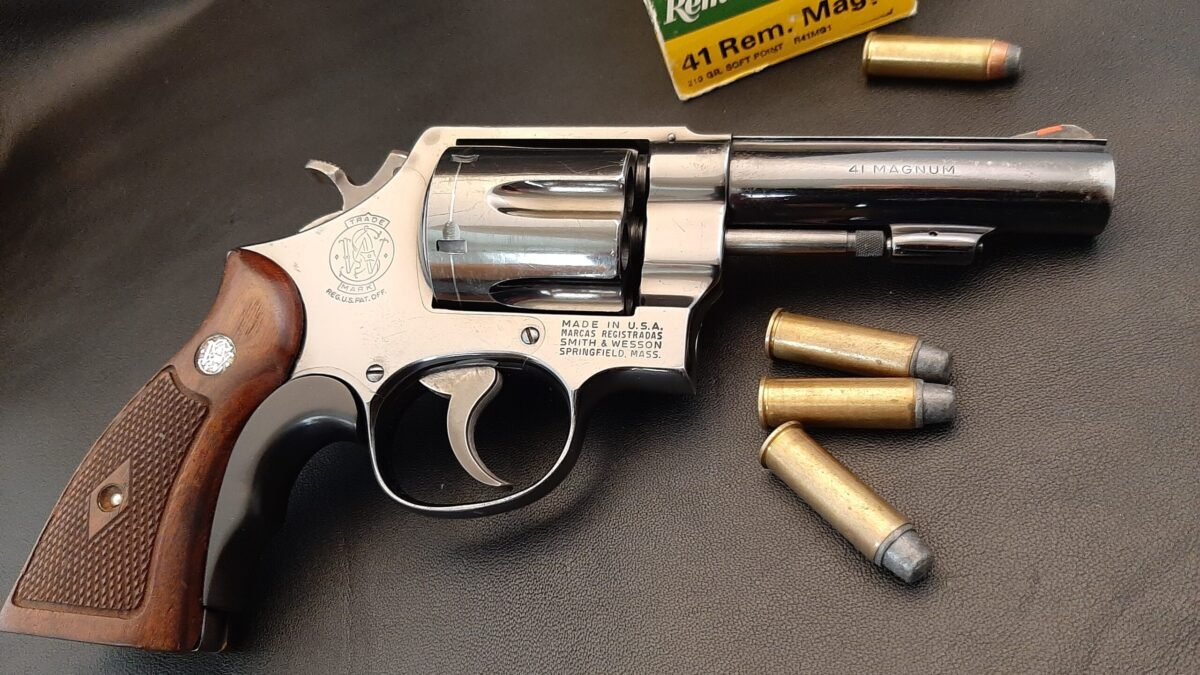
The .41 Remington Magnum was never one of those cartridges that could be easily overshadowed by its famous brothers, the .44 Magnum and the .357 Magnum. Going by the concept of the “just right” cartridge—the one which was powerful enough to handle serious work and at the same time was not too overpowering to annoy the shooter— the story of the cartridge was over a decade, being a mixture of tremendous expectations, some obstacles, and the loyalty of fans that still exist nowadays.

The vision of the .41 Magnum was sketched out in the early 1960s, and this could be linked to the three most influential people of the time in the shooting world: Elmer Keith, Bill Jordan, and Skeeter Skelton. They insisted that the policemen required a revolver bullet that would be more balanced in terms of stopping power and ease of control.

With the cooperation of Smith & Wesson, Colt, Ruger, and Remington, that concept turned into a real thing in 1964 as both the cartridge and the Smith & Wesson Model 57 revolver made their first appearance.

As for the technical side of things, the .41 Magnum is sitting comfortably in between its well-known brothers. The standard factory loads firing a .410-inch bullet pushed a 210-grain projectile at velocities ranging from 1200 to 1500 feet per second, which depended on the length of the barrel and the type of ammunition. What was achieved was a round that showed similar muzzle energy to the .44 Magnum, but with a slightly less harsh recoil that allowed for a more pleasant shooting experience to the shooter – an improvement that is still valued today.

Notwithstanding its potential, the cartridge was hard-pressed to gain the sympathy of the police officers it was meant for. The N-frame revolvers produced with the aim to chamber them, for instance, the Model 57, and the more practical Model 58, were heavy pistols that, according to numerous people, were too bulky for daily carrying.

Even the so-called “police load” versions that were converted to lower revolver outputs still gave off more recoil than the .38 Special revolvers that were issued to the police departments at that time. Along with the increasing transition towards semi-automatic pistols and the huge surge in popularity of the .44 Magnum after it hit Hollywood, the .41 was never able to get launched properly in law enforcement circles.

Anyway, it really made a difference in the hunting and sporting arenas. Handgun hunters got to appreciate it very quickly, first of all, for its flat trajectory, which amazed them in the hunt of deer, wild hogs, and bears. Besides, it was even better because the shooters did not suffer from the common kind of bone-tingling recusals with the larger magnums. Target shooters, basically those taking part in the handgun silhouette matches, also found the cartridge very accurate and very dependable, which is the main reason it was there long after various “police cartridges” disappeared.

Nevertheless, the .41 Magnum was never as common as the .44, and thus it did not have that much of a widespread distribution of ammo and guns from which it could benefit. It has been a less visible cartridge for more specialized purposes, but it has still been around.

Remington, Hornady, Federal, and Underwood- all major manufacturers are still equipping hunting round customers with heavy bullets like the XTP and Swift A-Fram, and also offering more general-purpose options. In addition, fans of revolvers can find them in classic pieces such as the Smith & Wesson Model 57, Ruger Blackhawk, and Ruger Redhawk, while a few lever-action rifles keep the long-gun chamber alive as well.

Right now, the .41 Remington Magnum is still one of those cartridges with cult-like fan bases. It has gained a reputation as a cartridge combining power, accuracy, and shootability- all of these in equal measure. The flexibility of the handloaders in particular is one reason, as they can make it fit for every single thing from soft practice rounds to hard-hitting, big game-worthy loads.

It has not gone far enough to become the commercial success that its creators dreamed of, but it sure has managed to keep a definite place among the shooting world where power and elegance are combined unusually. Performance lovers will always see it not as just a niche round but rather as a trusted companion that has genuine staying power.
